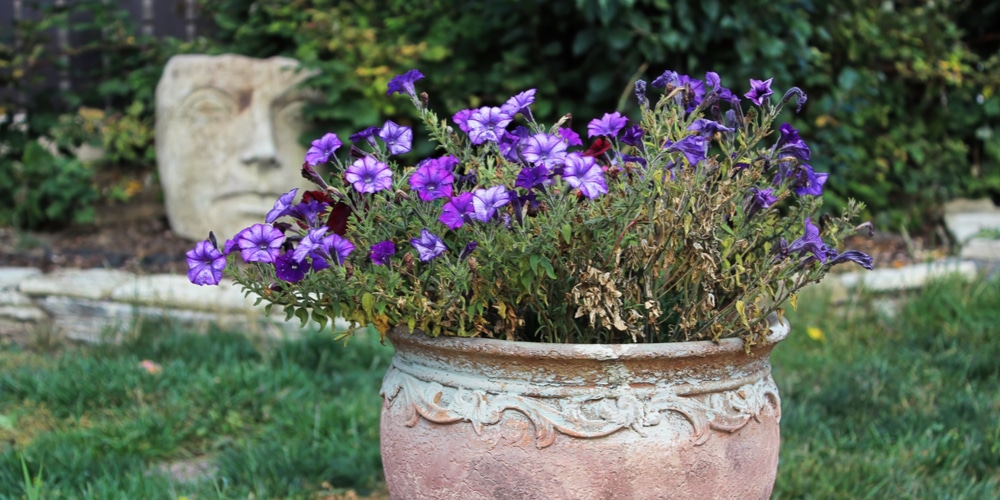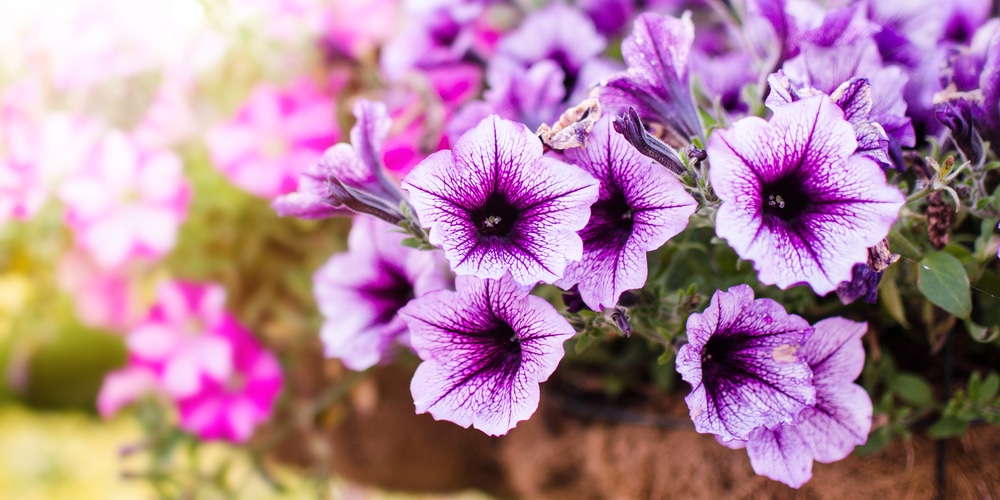If you’re like most people, you love the sight of petunias in bloom. Who doesn’t? Their cheerful colors light up any garden or porch, and they’re so easy to grow. Planting these flowers is practically foolproof.
Aside from being forgiving plants, petunias are also pretty low-maintenance. They don’t need a lot of water or fertilizer, and they can tolerate some neglect. These plants can tolerate most pests and diseases, too.
But sometimes petunias don’t bloom as expected. Even the most experienced gardener will notice that their petunias’ leaves turn yellow. This can be alarming, especially if you don’t know what’s causing it.
Reasons Why Your Petunia is Starting to Develop Yellow Leaves

Your petunia is quite the picture of health- until you start to notice its leaves turning an alarming yellow. Before you start to panic, it’s important to understand that there are a few reasons why this may be happening.
Nutrient Deficiency
All plants need a range of nutrients to stay healthy, and petunias are no different. If your petunia is starting to develop yellow leaves, it could be a sign that it is lacking in one or more essential nutrients.
The most common nutrient deficiencies in petunias are nitrogen and phosphorus. Both of these nutrients are vital for plant growth, and a deficiency can cause the leaves to turn yellow and the stems to become weak.
A lack of potassium can also cause petunias to develop yellow leaves, as well as brown spots on the leaves. If you suspect that your petunia is suffering from a nutrient deficiency, a simple soil test can confirm this. Once you know which nutrient is lacking, you can amend the soil with the appropriate fertilizer to correct the problem.
Watering Issues
Too much or too little water can cause petunias to develop yellow leaves. If the leaves are wilted and drooping, it’s a sign that the plant is thirsty and needs more water. On the other hand, if the leaves are starting to turn yellow and drop off, it’s a sign that the plant is getting too much water.
Petunias have medium watering needs, which means they should be watered about once a week. When watering petunias, make sure to soak the soil until it is moist but not soggy. Soggy soil and petunias don’t mix!
If you suspect that your petunia’s watering needs are not being met, adjust your watering schedule accordingly.
Tobacco Mosaic Virus
In general, yellow leaves on petunias can be caused by different viral diseases and probably some pests too.
Out of all the viral diseases that can affect petunias, the tobacco mosaic virus (TMV) is the most common. When a plant is affected by this virus, the leaves will turn yellow and develop mosaic patterns, hence, the name.
Aside from petunias, tobacco, cucumbers, and tomatoes are also susceptible to this virus. Aphids are the most common carriers of TMV, so be on the lookout for these pests. Aside from aphids, they can also be found in soil, transmitted from the hands of a tobacco user or on infected tools.
The best way to prevent this virus is by keeping your garden clean and free of debris. You should also disinfect your gardening tools regularly and wash your hands after handling tobacco products.
Unfortunately, unlike watering and nutrient deficiency issues, TMV is incurable. If your petunia is infected, the best thing you can do is remove the affected plant and dispose of it properly.
Other Pests and Diseases
Aside from TMV, there are other viral diseases that can affect petunias, such as impatiens necrotic spot virus (INSV) and cucumber mosaic virus (CMV). Petunias can also be affected by fungal diseases, such as powdery mildew and botrytis.
Pests known to feast on petunias include aphids, whiteflies, spider mites, and thrips. These pests can cause the leaves to turn yellow and eventually drop off.
What Should You Do When You Notice Yellowing Leaves on Petunias
As alarming as it may sound, most of the time, yellowing leaves on petunias are not a cause for concern unless it’s affected by TMV.
For this, let’s go with the basics. Check the soil’s moisture. Is it too dry or too wet? If it’s too dry, water the plant. If it’s too wet, check the drainage and ensure that water can flow freely. Sometimes, you just need to wait for the soil to dry out a bit before watering again.
Next, check the plant’s nutrient needs. Is it possible that it lacks nitrogen, phosphorus, or potassium? A simple soil test can confirm this. Once you know which nutrient is lacking, you can amend the soil with the appropriate fertilizer to correct the problem.
Lastly, carefully inspect the leaves. Check for patterns and watch out for signs of pests or diseases. If you notice any, take action immediately.
Most of the time, it’s one of these three factors, and taking appropriate action should correct the problem.
Yellowing leaves on petunias: Final Thoughts
Like any other plant, yellowing leaves may not be the best sight in your garden. But, it doesn’t mean that your petunias are doomed. In most cases, it can be easily fixed by adjusting your watering and fertilizing schedule. Keep an eye out for pests and diseases too.
Though forgiving of neglect, your petunias will still perform and look their best with the proper care. So, make sure to give them the attention they need. After all, they deserve it! They brighten up any garden with their vibrant blooms.
Related Article: How to Protect Petunias From Frost
